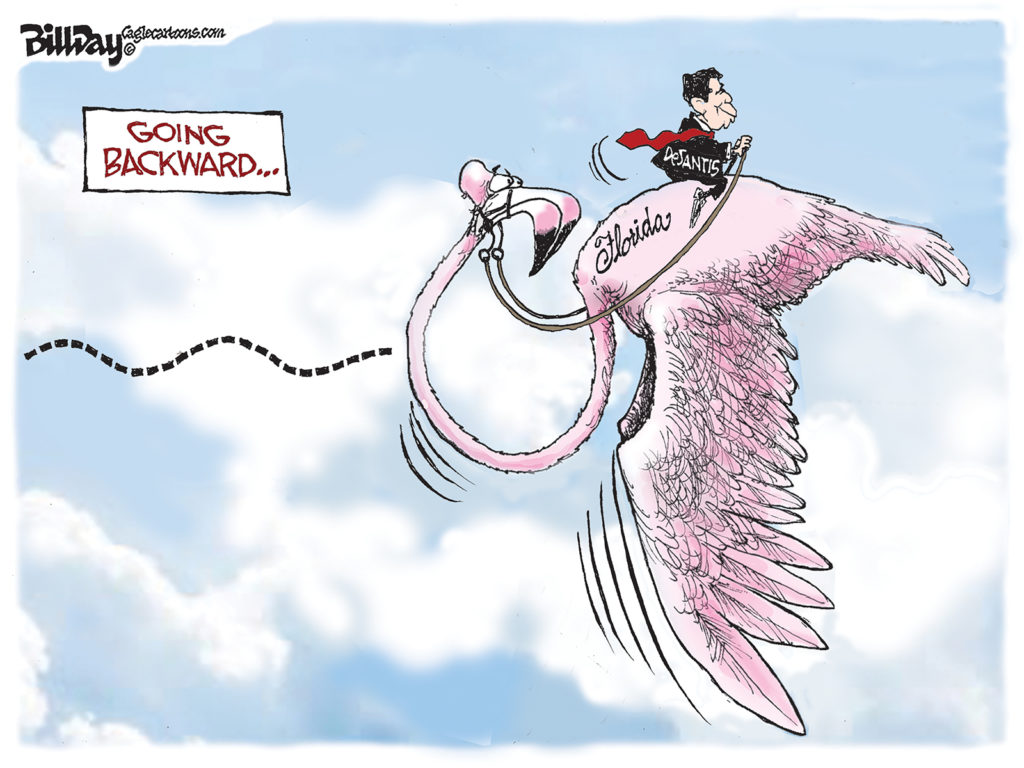Watching the overheated reaction from some Memphis in May acolytes to a proposed design for Tom Lee Park, we are left with the feeling that we’ve seen this movie before.
We saw it with the National Civil Rights Museum, we saw it with Shelby Farms Park, we saw it with The Pyramid, and we saw it with FedExForum, to name a few.
Each one was criticized and demeaned although as the aphorism says, success has many fathers (and mothers), and today’s it’s hard to find many people who do not claim to have seen the wisdom of these projects when they were proposed.
In each of these, Memphis bolstered its reputation as a city that doesn’t handle change well and many people, like members of a dysfunctional family, push back on progress that threatens the dysfunction that they are so familiar with.
Meanwhile, other cities – including some we consider our competitive rivals – are making transformative investments in quality of life assets that position them strongly from a national perspective and speak to their confidence in the future and their aspirations as a community.
The Past as Prologue
Memphis used to lap cities like Louisville, Cincinnati, and Pittsburgh, but they have credited their reimagined riverfronts with stimulating billions of dollars in new investments and developments. Chattanooga alone points to $4 billion in increased tourism, retail, and office development and Nashville reports that it has seen $1 billion in investment within two blocks of its new Riverfront Park.
Here’s it’s not just riverfront parks that trigger resistance from highly vocal critics. We remember well when it was the proposal to convert the Lorraine Motel into the National Civil Rights Museum.
There had been multiple public meetings to discuss the design and to involve a Smithsonian Institution exhibition expert. And yet, when it was announced that Memphis and Shelby County Governments were considering $2.2 million each in funding for the new museum – in order to match the $4.4 million from state government – government officials were accused of shoving the project down the public’s throat and wasting taxpayer money.
It was 1986, and it is easy to imagine the incendiary opposition if the project had been proposed in this era of social media. As it was, on the cusp of the age of faxes, the new machines were spitting out complaints while all the telephone lines in the city and county mayors’ offices were tied up with outraged callers furious about the project.
The Civil Rights Museum Outrage
Progress stalled as City of Memphis said it would only act on the funding request after the Shelby County Board of Commissioners, and they were reluctant to go first. Shelby County Mayor Bill Morris, elected with an unusual coalition of Republicans and African Americans to what was then a nonpartisan office, broke the logjam with some clever political theater.
He said that if the commissioners approved the funding, it would never be released unless the museum met roughly a dozen conditions that sounded rigorous, such as it had to be a Smithsonian-designed facility, there would be no city-county money for operations, State of Tennessee would be in charge of the building conversion, and more. Opponents were satisfied because they presumed the museum’s sponsors would never clear these hurdles, but unknown to them, the Morris Administration’s list of conditions was an inventory of things already accomplished or well under way.
In short order, local government funding was approved and the National Civil Rights Museum was under way, opening in 1991. That, however, did not end the heated opposition, as demonstrated by the firebombing of the project.
Today, the National Civil Rights Museum has undergone a $11 million expansion of the museum in 2002 and a $27 million rebirth in 2014. It is among the top five percent of institutions accredited by the American Alliance of Museums and is a founding member of the International Coalition of Sites of Conscience.
The Outcry About the Pyramid
About five months after the opening of the museum, so did The Pyramid after a turbulent on-again, off-again development plan with Memphian John Tigrett and Sidney Shlenker, co-owner of the NBA’s Denver Nuggets, crashed and burned. In the end, City of Memphis and Shelby County put the pieces of the $65 million arena back together again (absent all the promised attractions by the private developers) so it could become the “Tomb of Doom” for University of Memphis opponents and shown on countless television programs and tourism brochures as the iconic symbol of Memphis.
From its beginning, opponents were vociferous in their hostility toward the proposed building. It should not be built downtown, it should be built on the south bluffs, its site felt like a place where voodoo was practiced (according to one county commissioner), its cost was promised to be $39 million by Mr. Tigrett but it cost $65 million, the architect should be from Memphis, and more.
The proposed private development in the arena – which at varied times included a Hard Rock Café (although that company’s board said founder Isaac Tigrett never received its approval), a regular musical spectacle, rides, a music museum, a shortwave radio station playing Memphis music, an inclinator on the side of the building to its apex – collapsed when business animosity between Mr. Tigrett and Mr. Shlenker shredded all the grand plans.
At the time of Pyramid’s opening a public poll was released: 49% of the public supported it and 49% did not.
Opposition to Shelby Farms Park, Too
Looking at Shelby Farms Park today, it’s easy to forget that there was a time when 333-acre Plough Park, carved out of the 4,500-acre site, was good enough for Memphis. In fact, in 1983, there was so little ambition about the land’s future that 1,000 acres was given away to Agricenter International’s big plan for an agricultural research and demonstration center.
In 2002, business leaders Ron Terry and J.R. (Pitt) Hyde III proposed a conservancy to manage and operate a park at what was then stubbornly called the Shelby County Penal Farm – county engineers thought calling it a park would make it more difficult to get a highway through it. The idea was initially approved by the Shelby County Board of Commissioners but later reversed.
There were complaints that the park was being turned over to elites, that leaving the land as open fields was what dog owners and hikers wanted, that county taxpayers would end up paying for operations, that taxpayers should not pay for a new park, and that the master plan should not be done by a New York landscape architecture and urban planning firm, albeit the one repeatedly honored for its work on New York City’s High Line.
After Shelby County Mayor A C Wharton Jr. appointed a 21-member task force whose purpose was essentially to revive the conservancy plan, in 2006, the Shelby County Board of Commissioners approved a 50-year conservation easement and three months later, approved a 10-year management agreement with the Shelby Farms Park Conservancy. (It was amended to 50 years in 2015).
In the end, Shelby County Government provided only $3 million of the $70 million project with $62 million coming from private and philanthropic sources. Today, there are high fives all around for the community’s vision in creating such spectacular parkland, forgetting that there was a time when county government listed the land as “surplus” and was willing to five away the land for almost any idea for the site, including offering 3,000 acres to the Atomic Energy Commission for an “atom smasher,” Famously, the public shot down the idea for it to become a “planned community” for 65,000 people.
FedExForum Was No Slam Dunk
In that same era, the Pyramid, only a decade old, was identified as possible venue for the relocated Vancouver Grizzlies, however, when the cost estimates to retrofit the building to meet NBA standards came back, it became clear that Memphis could have a new building essentially for the price of a retrofitted Pyramid.
In the wake of the estimates, all of the earlier negative opinions about The Pyramid were resurrected and amplified: it was a waste of money, the private developers pocketed public money, it should have been built at the Fairgrounds in the first place, and corrupt public officials had taken payoffs to build it downtown.
Combined with the unresolved angst were new complaints: taxpayers were being gouged to build a playpen for black athletes and a wealthy owner, an NBA team would make University of Memphis basketball irrelevant, the building costs too much and shouldn’t be downtown near Beale Street, local politicians are on the take, and more.
Once again, the mayors’ offices were inundated with calls, letters, and faxes opposing the project and led by a recalcitrant Heidi Shafer calling for a public referendum and a lawsuit by gadfly attorney Duncan Ragsdale alleging a violation of bond law, the move of the Grizzlies to Memphis were anything but a slam dunk.
In the midst of the controversy in Memphis slowing down a decision, other cities were contacting the NBA about their interest in hosting the migrating NBA team. Eventually, buttressed by a University of Memphis economic impact study and a public opinion poll showing a majority of Shelby Countians supported the project, it squeaked through the local legislative process.
Setting A Standard
In the end, despite all predictions to the contrary, Memphis and Shelby County got most of its “deal breakers,” including the much-maligned and misunderstood noncompete agreement which meant that the Grizzlies paid the operating losses for the arena rather than the public (as they do in Nashville with the NHL arena at the tune of about $7 million a year).
All predictions were that a market as small as Memphis would never get this concession, much less the pledge that the team would remain in Memphis for almost 20 years (most prognosticators said the Grizzlies’ ownership would “flip” the team and move to a more lucrative market), and if the team in fact did leave early, it would have to pay off the building bonds.
In the end, Memphis and Shelby County got everything they asked for, and since the opening of the arena, taxpayers have saved around $100 million as a result. Best of all, the vast majority of the cost of the arena came from user-related fees like the sales tax rebate from NBA events, a seat use tax, the Tourism Development Zone (which meant 75% of every $1 in this funding stream came from state of Tennessee), and an increase car rental tax at the airport.
A Compelling Vision of a Great Park
Today, it’s hard to imagine this community without the National Civil Rights Museum, The Pyramid, Shelby Farms Park, and FedExForum, but it is equally hard to imagine that any transformative project, say, Tom Lee Park, will not be subjected to the same kind of pushback and resistance to change.
The words from the 2005 case study for Shelby Farms Park are especially relevant to the current issue: “Today, we have a new mandate. It comes from a deeper understanding of the full value of the park. As a result, the mandate is for green spaces and recreation. But beyond that, it is a mandate for public health, for economic vitality, for increased property values and stable neighborhoods, and for youth development.
“It is a mandate for allowing the park to achieve its full potential as we build the best community that we can and create unique benefits for our people. All of this can be done. All it takes is a compelling vision of a great American park.”
***
Join us at the Smart City Memphis Facebook page for daily articles, reports, and commentaries relevant to Memphis and the conversations that begin here.






First of all, we need to maintain what we have… we don’t. Second of all, fix Mud Island first… it’s broken. Third of all secure the parks, they are not safe today… In conclusion, don’t mess with Tom Lee… Memphis in May is Priority 1.
YES! The overarching resistance to any and all change seems to be hardwired for locals. It’s depressing and acts as a repellent for young people wanting to move to Memphis.
I do find it a little surprising that more Memphians aren’t in support of a greatly improved TLP, especially when we’ve seen investments in Chattanooga and Nashville spurred by their river park improvements. I think most of this opposition comes from the fear that an improved park comes at the cost of Memphis in May (MIM). It IS possible to have an improved park that facilitates an improved festival. Parties on both sides of this argument (MIM and MRPP) seem to be treating this like an “us or them” situation. It looks like MIM doesn’t want to take this as an opportunity to design an even better festival (an empty field is easier, but wouldn’t a great park make it a more enjoyable experience?). I also think MRPP could have asked Studio Gang and SCAPE Studio (both fantastic practices that we are lucky to have on this project!) to approach the redesign as something that could make the festival EASIER on MIM (could an east/west stage orientation improve setup and reduce wear-and-tear by having back-of-house operations along Riverside? Could one of the stages be more of a permanent set-up used for more events throughout the year, also providing easier festival set-up and reduced wear-and-tear?) rather than a “give them just enough space” kind of deal. Maybe then there would be more solid support. I have a lot of thoughts about this, but this post is already really long. I want to see this new park more than anything, but to be truly successful it should complement an even better MIM. That’ll take people on both sides working together, and I just can’t believe that’s really as hard as people make it seem.